The history of Tonina can be found meticulously engraved upon its stone monuments and stelae that lie scattered amidst the ruins of this once great city. The majority of excavations at Toniná have taken place on the surface of its incredible seven tiered pyramid during the restoration process. The acropolis was developed and redeveloped throughout Tonina’s history, with the majority of works taking place during the Late Classic period. As a result, the vast majority of monuments that have been recovered date from period between 7th and 8th centuries, making this era the best understood.
Many of the monuments found within the city were discovered buried, broken and incomplete, which means the history of Toniná is very fragmented and difficult to decipher. Beyond the pyramid acropolis, Tonina’s origins and early history still lies buried deep beneath the restored structures that are visible today and the outlying mounds that wait to be explored. There is just one fragmentary reference that talks of Tonina’s early history and records an early ruler coming to power in 217AD. However, this was found on an 8th century monument and no supporting evidence been uncovered.
The Beginning of the History of Tonina
The oldest written record found at Toniná is Monument 160, which dates to 514AD. The circular disc, which is also known as Altar M.p43(2), records several important events between 501AD and 514AD(3). Due to the damage sustained and the difficulty in deciphering the partial glyphs, the majority of events remain uncertain – as is the name of the commissioning Ruler, although he has been dubbed “Reptile Head”. From what is legible on Altar M.p43, epigraphers have managed to ascertain the death in 508AD of Tikal’s Ruler, Chak Tok Ich’aak II, and the death of the king of Calakmul in 509AD. Calakmul and Tikal were the superpowers of the Classic Era and are known to have been at war with one another for much of their history. Given their stature, it may not be entirely surprising that they are mentioned at Tonina, but they were still very distant cities who should have held no influence over Tonina, and so it is very interesting that they dedicated large sections of Altar M.p43 to them. Intriguingly, Calakmul recorded the enthronement of an non-royal king in 514AD, the same date the Altar M.p23 was carved, which was followed by a prolonged hiatus. Calakmul was the seat for the mighty Kaan Dynasty, and it is thought they may have relocated during this period. Their emblem was the head of a snake, so it is very coincidental that the first ruler in the history of Tonina was named “Reptile Head”.
The Holy Lord & The Divine Line
Whilst the first ruler of Toniná remains shrouded in mystery, the second ruler can be found flamboyantly showcased on an elegant stela dressed in the unmistakable fineries of a Mayan Divine Lord. The stela, known as Monument 168, dates to the 6th century and was found broken into three parts on the 5th Level of Tonina’s seven tiered acropolis (the original is now found in Tonina’s on-site museum and a replica stands on the acropolis where the stela was found). There is some conjecture over what his name was, and so he is variously known as Jaguar Bird Peccary, Jaguar Bird Tapir, K’inich Sawan B’ahlam Yaxuun Tihl and Sotz’ Choj (Zotz Choj), Ruler 2 and Ruler X. Jaguar Bird Peccary is thought to have reigned from 563AD until around 577AD and 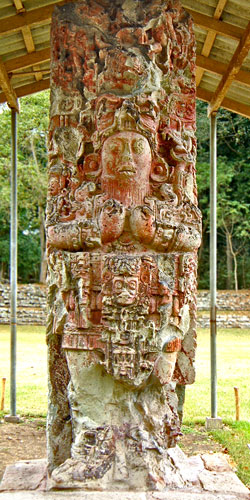 W1121: Stela C – Copan Monument 168 shows him as an elderly figure wearing the regalia of divine ruler-ship, including the jawed headdress and crocodile loin cloth, whilst clutching the serpent bar of divine ruler-ship. The stela is near identical to the those found in the distant Mayan cities of Copan and Quirigua, both in its artistic content and the unusual high style of relief known as “in-the-round”. The minor settlement of Copan was re-founded in 426AD by a foreign lord who arrived from Teotihuacan, via Tikal and El Peru. After his arrival and founding of a divine lineage, Copan rapidly expanded and grew to become one of the greatest Mayan cities ever built. It seems likely that a similar set of events happened at Tonina, as there is similarly evidence of Teotihuacano influence and a monument text that describes a descendent twelfth in-line to the throne of El Peru as being responsible for founding a royal lineage at Tonina4. A similar style of expansion also ensued, as Tonina broadened its political horizons with the appointment of two local nobles as vassals in 612AD. The name of the ruler at that time is uncertain, although it is likely to have been Chak B’olon Chaak, and the history of Tonina continues to be vague through the accession of K’inich Hix Chapat in 615AD – at just 8 or 9 years old – who is recorded as overseeing the Period Ending festivities of 628AD, 652AD and 657AD.
W1121: Stela C – Copan Monument 168 shows him as an elderly figure wearing the regalia of divine ruler-ship, including the jawed headdress and crocodile loin cloth, whilst clutching the serpent bar of divine ruler-ship. The stela is near identical to the those found in the distant Mayan cities of Copan and Quirigua, both in its artistic content and the unusual high style of relief known as “in-the-round”. The minor settlement of Copan was re-founded in 426AD by a foreign lord who arrived from Teotihuacan, via Tikal and El Peru. After his arrival and founding of a divine lineage, Copan rapidly expanded and grew to become one of the greatest Mayan cities ever built. It seems likely that a similar set of events happened at Tonina, as there is similarly evidence of Teotihuacano influence and a monument text that describes a descendent twelfth in-line to the throne of El Peru as being responsible for founding a royal lineage at Tonina4. A similar style of expansion also ensued, as Tonina broadened its political horizons with the appointment of two local nobles as vassals in 612AD. The name of the ruler at that time is uncertain, although it is likely to have been Chak B’olon Chaak, and the history of Tonina continues to be vague through the accession of K’inich Hix Chapat in 615AD – at just 8 or 9 years old – who is recorded as overseeing the Period Ending festivities of 628AD, 652AD and 657AD.
Expansion on the Late Classic Landscape
The history of Tonina continues with Ruler 2, or Jaguar Casper, who ascended to the throne in 668AD. Ruler 2 is noted for his commissioning of Giant Ahaw Altars that feature rope bound captives, including one of a woman, and tell us a lot about the political and military wranglings that Tonina was starting to become involved in. It is not known if Tonina was the aggressor, trying to expand its territory, or defending itself, as it gained the attention of the other cities in the region. It is thought that Ruler 2’s reign ended when he was captured by the Palenque king, K’inich Kan B’alam, in 684AD. Certainly, the capture of the Ruler of Po is listed amongst the inscriptions found in Temple XVII at Palenque, but it does not name exactly who this was.
Images of war and capture increase greatly during the reign of Ruler 3, K’inich B’aaknal Chaak, who was born in 652AD and ascended to power in 688AD. Several monuments erected by K’inich B’aaknal Chaak record the capture of enemy warriors from Chinikiha, La Mar and Palenque, including one prominent figure named Lord K’awiil Mo’ from Palenque. K’inich B’aaknal Chaak built the Sunken Ballcourt, which dedicated in 699AD and played a significant part in a sacred landscape that was being developed at Tonina. The sunken design of the ballcourt, the adjoining sacrificial altar and the nearby Temple of the Cosmic War, all suggest that the Grand Plaza was being developed to represent the legendary struggles of the Hero Twins, Hunahpu and Xlbalanque, and their battles through the underworld. In Mayan folklore, the Hero Twins sought to bring their father back to life by sacrificing themselves and defeating the Lords of Xibalba at the ball-game. It was the ultimate story of heroism, death, sacrifice and rebirth and echoed the fundamental principles of Tonina. The public space of Tonina’s Grand Plaza would have undoubtedly hosted festivities and re-enactments of the legendary ball-game, with the tyrannical Lords of Xibalba played by their captives in a rigged game that resulted in them being beheaded. Six large statues of bound captives that are known to have been vassal lords of Palenque lined the court, broadcasting the story of Tonina’s virtuous victories.
A Kingdom in its Infancy
The history of Tonina then enters a strange phase with Ruler 4, known as “Radiant Jaguar-God Fire”, coming to power in 709AD aged only two or three years’ old. The previous ruler, K’inich B’aaknal Chaak, enjoyed a long and illustrious life and would have been 54 when Ruler 4 was born. Even if Ruler 4 was his son, it is very unlikely that he would have been the oldest son. There is no record that the city was sacked or that the king and his family were captured or fled the city, and there is no sign that there was a revolt or military coup. But nevertheless, at two or three years old, a new king was installed as little more than a figurehead, with two mentors, K’el Ne’ Hix and Aj Ch’anaah, holding supreme control.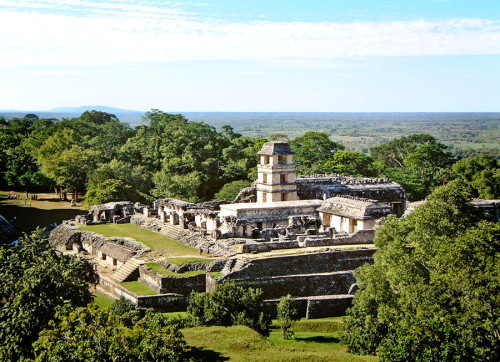 W0484: The Great city of Palenque Regardless of how or why Ruler 4 came to power, the war with Palenque raged on and gave K’el Ne’ Hix the opportunity to produce the greatest military conquest in the history of Tonina when, in 711AD, he managed to defeat Palenque and capture the king, K’an Joy Chitam II – one of the sons of the prestigious Pakal the Great. This forced the great city into a ten-year silence whilst they held Kan Joy Chitam II captive. Another Monument erected during Ruler 4’s reign depicts a captive from the distant city of Calakmul, which suggests that the territory and power of Tonina had expanded to rival the most powerful cities in the Mayan world. More evidence of Tonina’s increasing power is found at Bonampak where, in 715AD, the incumbent king is recorded as being a vassal of Tonina. Period ending Monuments were dedicated by Ruler 4 in 716AD and 721AD, whilst the king still just a young teenager. Then a Queen named Ix K’awiil Kaan is listed as dying in 722AD, suggesting that she had come to power very briefly, before K’inich Ich’aak Chapat is recorded as taking the throne in 723AD. Monuments have been found that describe the life of K’inich Ich’aak Chapat, including his birth, in 696AD, and the name of his mother, Lady Winik Timan K’awiil. K’inich Ich’aak Chapat is also recorded as undertaking a poorly understood ceremony that involved “entering the tomb” of K’inich B’aaknal Chaak, in which the new king would create a spiritual bond with the deceased king. His decision to record his ancestry and enter the tomb of K’inich B’aaknal Chaak suggests that he may have been the rightful heir to K’inich B’aaknal Chaak and was reforging the divine lineage. Whether Ruler 4 had been installed as the result of a coup or whether K’inich B’aaknal Chaak and his family had fled the city, leaving Ruler 4 temporarily in charge, is not known, but it seems that K’inich Ich’aak Chapat was returning to take his rightful place on the throne. K’inich Ich’aak Chapat’s reign is noted for the absence of statues picturing bound captives that previous rulers had obsessed over. It is known that Tonina was embroiled in war with the southern city of Piedras Negras during his reign, so it is quite unusual that the trophies of war are missing. Another interesting feature of this period is that Palenque’s silence finally ended with the accession of a new ruler who doesn’t appear to be part of the divine lineage of Pakal. The new Palenque king, named K’inich Ahkal Mo’ Nab’ III, also waged war on Piedras Negras – perhaps indicating that this was a period of alliance between the neighbouring states.
W0484: The Great city of Palenque Regardless of how or why Ruler 4 came to power, the war with Palenque raged on and gave K’el Ne’ Hix the opportunity to produce the greatest military conquest in the history of Tonina when, in 711AD, he managed to defeat Palenque and capture the king, K’an Joy Chitam II – one of the sons of the prestigious Pakal the Great. This forced the great city into a ten-year silence whilst they held Kan Joy Chitam II captive. Another Monument erected during Ruler 4’s reign depicts a captive from the distant city of Calakmul, which suggests that the territory and power of Tonina had expanded to rival the most powerful cities in the Mayan world. More evidence of Tonina’s increasing power is found at Bonampak where, in 715AD, the incumbent king is recorded as being a vassal of Tonina. Period ending Monuments were dedicated by Ruler 4 in 716AD and 721AD, whilst the king still just a young teenager. Then a Queen named Ix K’awiil Kaan is listed as dying in 722AD, suggesting that she had come to power very briefly, before K’inich Ich’aak Chapat is recorded as taking the throne in 723AD. Monuments have been found that describe the life of K’inich Ich’aak Chapat, including his birth, in 696AD, and the name of his mother, Lady Winik Timan K’awiil. K’inich Ich’aak Chapat is also recorded as undertaking a poorly understood ceremony that involved “entering the tomb” of K’inich B’aaknal Chaak, in which the new king would create a spiritual bond with the deceased king. His decision to record his ancestry and enter the tomb of K’inich B’aaknal Chaak suggests that he may have been the rightful heir to K’inich B’aaknal Chaak and was reforging the divine lineage. Whether Ruler 4 had been installed as the result of a coup or whether K’inich B’aaknal Chaak and his family had fled the city, leaving Ruler 4 temporarily in charge, is not known, but it seems that K’inich Ich’aak Chapat was returning to take his rightful place on the throne. K’inich Ich’aak Chapat’s reign is noted for the absence of statues picturing bound captives that previous rulers had obsessed over. It is known that Tonina was embroiled in war with the southern city of Piedras Negras during his reign, so it is quite unusual that the trophies of war are missing. Another interesting feature of this period is that Palenque’s silence finally ended with the accession of a new ruler who doesn’t appear to be part of the divine lineage of Pakal. The new Palenque king, named K’inich Ahkal Mo’ Nab’ III, also waged war on Piedras Negras – perhaps indicating that this was a period of alliance between the neighbouring states.
K’inich Ich’aak Chapat is recorded as present at several Period Ending events; including 726AD, 729AD, 730AD, 735AD, and 736AD, but his fate is unknown. A whole k’atun period of 20 years then passes with the history of Tonina left blank. The next record marks the death of Ruler 6, K’inich Tuun Chapat, in 762AD, along with a fragmentary record that hostilities with Palenque were reignited with the capture of an enemy lord. Ruler 7 again oversaw the defeat of Palenque in 764AD, but otherwise lived in a period of obscurity with no monuments yet discovered at Tonina that record his activities.
A Late Classic Renaissance
With the accession of Ruler 8 in around 787AD, comes a flurry of activity that is recorded on 8 monuments, which detail his birth, in 756AD, his death, in 796AD, and several Period Ending festival and miscellaneous events between 787AD and 795AD. Ruler 8 oversaw the defeat of Pomoy and Sak Tz’i’ and captured Ucha’an Aj Chih who was a vassal of Calakmul’s ruler B’olon K’awiil (listed on Monument 159, fig W0426). So prolific was Ruler 8 at capturing enemy lords, he was even given the nickname B’olon B’aak (He of Many Captives). Ruler 8 is also recorded as “entering the tomb” of Ruler 1 to perform a fire ceremony designed to rekindle the spirit of the city’s heritage. Ruler 8 also instigated a massive remodelling of the upper levels of the pyramidal acropolis to broadcast Tonina’s renewed strength.
The final chapter in the history of Tonina is very poorly understood with a handful of monuments spanning the last 100 years. Ruler 9, Uh Chapat, has just a Period Ending ceremony in 837AD and a stucco mural depicting garotted captives recorded against his name. Although insignificant in number, these records do demonstrate the important fact that the city was still successfully battling with it’s neighbours for supremacy. Despite these successes, the city was probably in terminal decline and fighting for survival. Ruler 10 has only a couple of Period Ending dates to his name, one in 904AD and a second in 906AD. The final record in the history of Tonina is Monument 101, which records a date of 909AD and is the last date found anywhere in the Mayan world that was recorded using the Mayan Long Count. This means that Tonina may have been the last city to fall before the Classic Maya Collapse brought about the abandonment of the vast majority of Mayan cities and the end to the religious practices of a 700 year-long period.
The Rise of the Great Pyramid Acropolis of Tonina
How, why or when the acropolis at Tonina was built has yet to be discovered, however it is now known the acropolis is resting on a largely man-made pyramidal structure that rises 72 metres – eclipsing the Pyramid of the Sun at Teotihuacan and making it one of the largest pyramids in the world. But, Tonina wasn’t simply a brash mountain of carved stone, erected to dominate the landscape and cast its shadow upon the people of the surrounding lands. Although this was a large part of its function, there are a number of highly esoteric features built into the structure that suggest it was built to honour the Sacred Calendar and the rituals that surrounded it. From bottom to top, the Tonina pyramid has 260 steps – equalling the number of days in the Sacred Calendar. It has 13 temples, equalling the day-numbers of the Mayan Calender, and seven levels, which added to the 13 temples completed the 20-day cycle (the 13 day numbers cycled against the 20 day names produces 260 uniquely identified days within the Sacred Calendar). It is well documented that Mayan astronomers were incredibly skilled. They would have been able to track 7 planets with the naked and have kept a close count of the 13 lunar-cycles that the moon completes each year. They may have added these together on their twenty fingers and come to the conclusion that these were the sacred numbers of the universe. The height of Tonina’s pyramid is somewhere between 72m and 80m tall, depending on whether you include the height of the buildings on top. 7 x 13 equals 91; if we were to consider that the height was 91 Tonina Units, then each of those units would be between 79cm and 88cm – giving an average of 83.5cm. At Teotihucan, the standard unit of measurement was 83cm and is believed to have been based on the distance between the fingertips and the heart of the average male citizen. It is not unlikely then, that Tonina’s standard unit was devised in the same way, and that the Pyramid is 7 x 13 Tonina Units tall.
There is little doubt that the pyramidal structure of Tonina deeply symbolic of time and may have even represented time. It should come as little surprise that it is home to the last Long Count date ever scribed as it would appear Tonina was a centre for the study of time. What remains a complete mystery, is how this visionary architectural achievement, which would have taken generations of highly skilled craftsman, scientists and priests to complete, could have been built amidst the constant struggles and battles that Tonina appears to have savoured as part of its ritual life. It is well documented that the great cultures of Mesoamerica used calendrical events to determine their actions, but it has generally been thought they were looking for portents and omens. New research suggests that they may have taken it further and that they directly linked themselves to the celestial motions they observed. As such, Divine Lords would rise and fall and rise again just like their celestial counterparts. Therefore, the wars and captures that we see recorded on the Monuments of the Maya were possibly staged events, with the Divine Lords living out the roles that they had be born to play. So whilst it looks as though Tonina and Palenque struggled and tussled for hundreds of years, entering periods of darkness followed by periods of expansion, they may have actually been passing power from polity to polity in a predetermined cycle of destiny.
References
1 The Social Construction of Ancient Cities – Edited by Monica L Smith – Smithsonian Institute 2013
2 The Mask Flange Iconographic Complex: Art, Ritual and History of a Maya Sacred Image – by David Curasco
3 http://www.precolumbia.org/pari/publications/journal/201/Tonina.pdf
4 Historical Dictionary of Mesoamerica By Walter Robert Thurmond Witschey, Clifford T. Brown

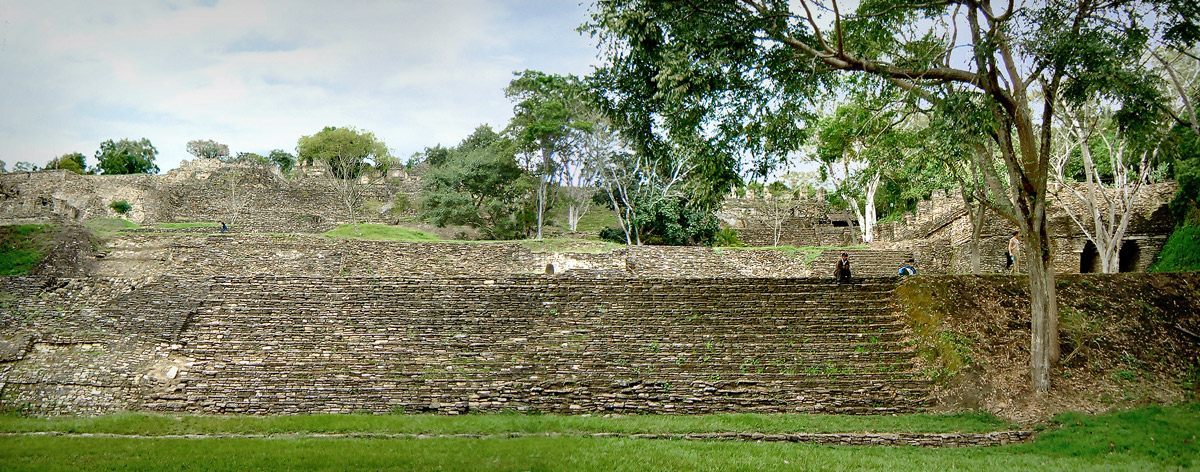
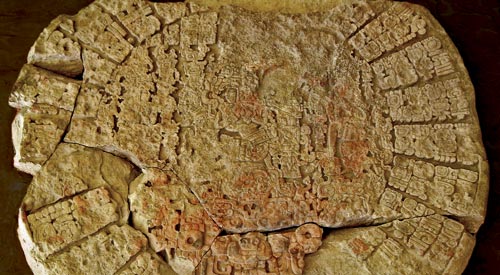

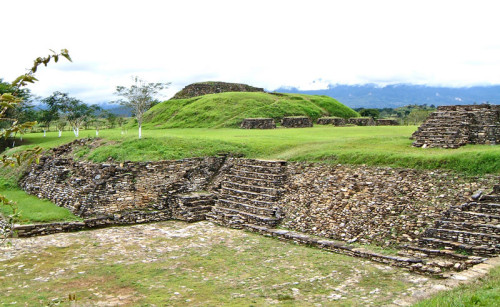
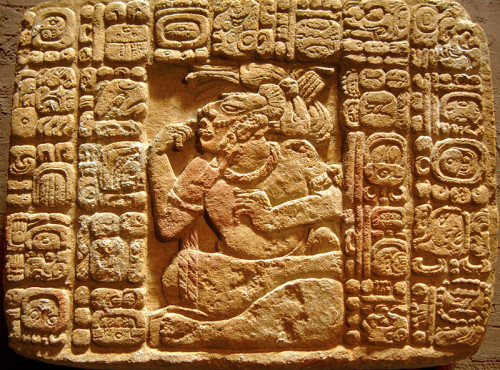
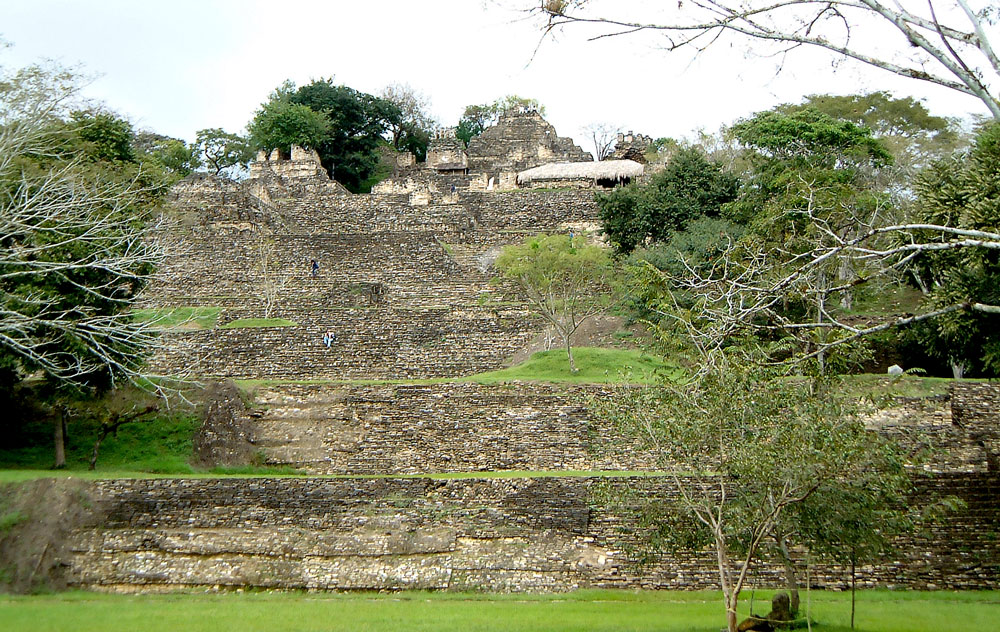
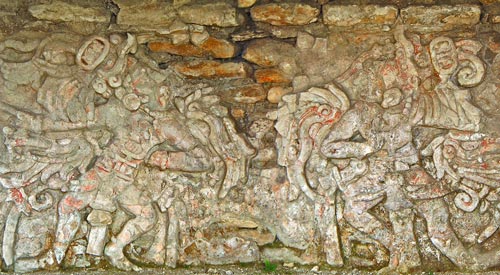
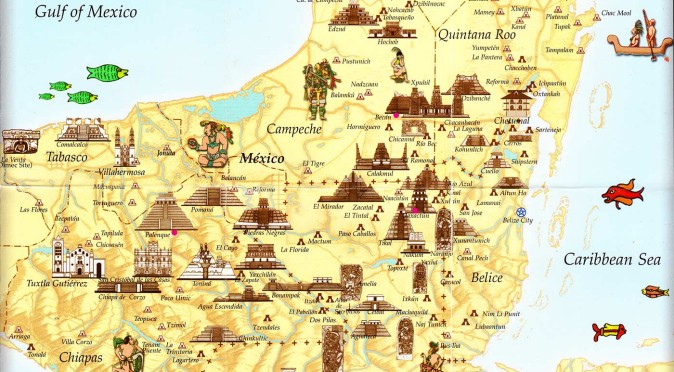
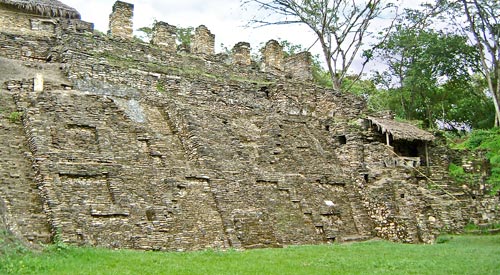
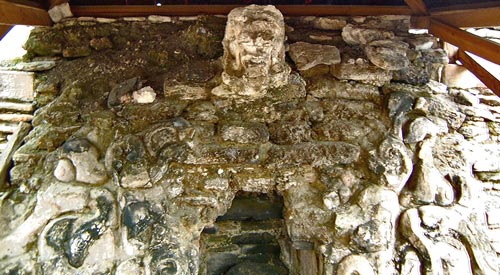
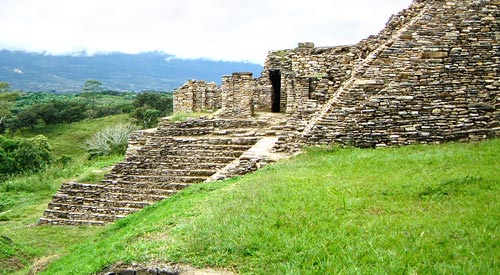
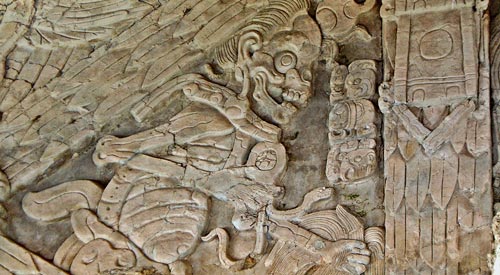
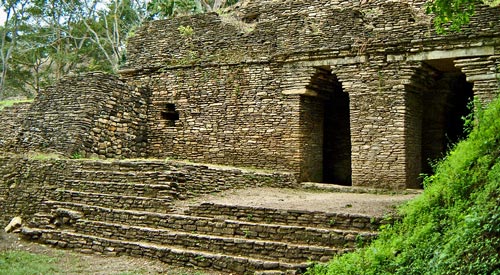
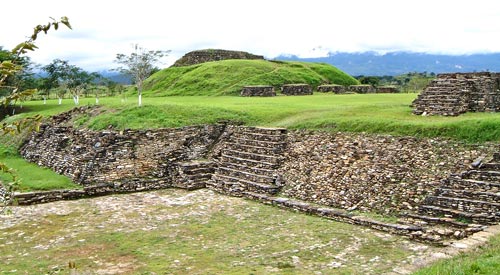
Great summary of the history of this relatively unknown ancient city.
I have been documenting some of the monuments in this site in the past couple of years and I think this is probably the best way to I have found online to familiarize oneself with how the old kingdom came to be and how its history unfolded.
Congratulations!
Thank you so much for taking the time to leave a comment, Jorge! Good luck with your research!